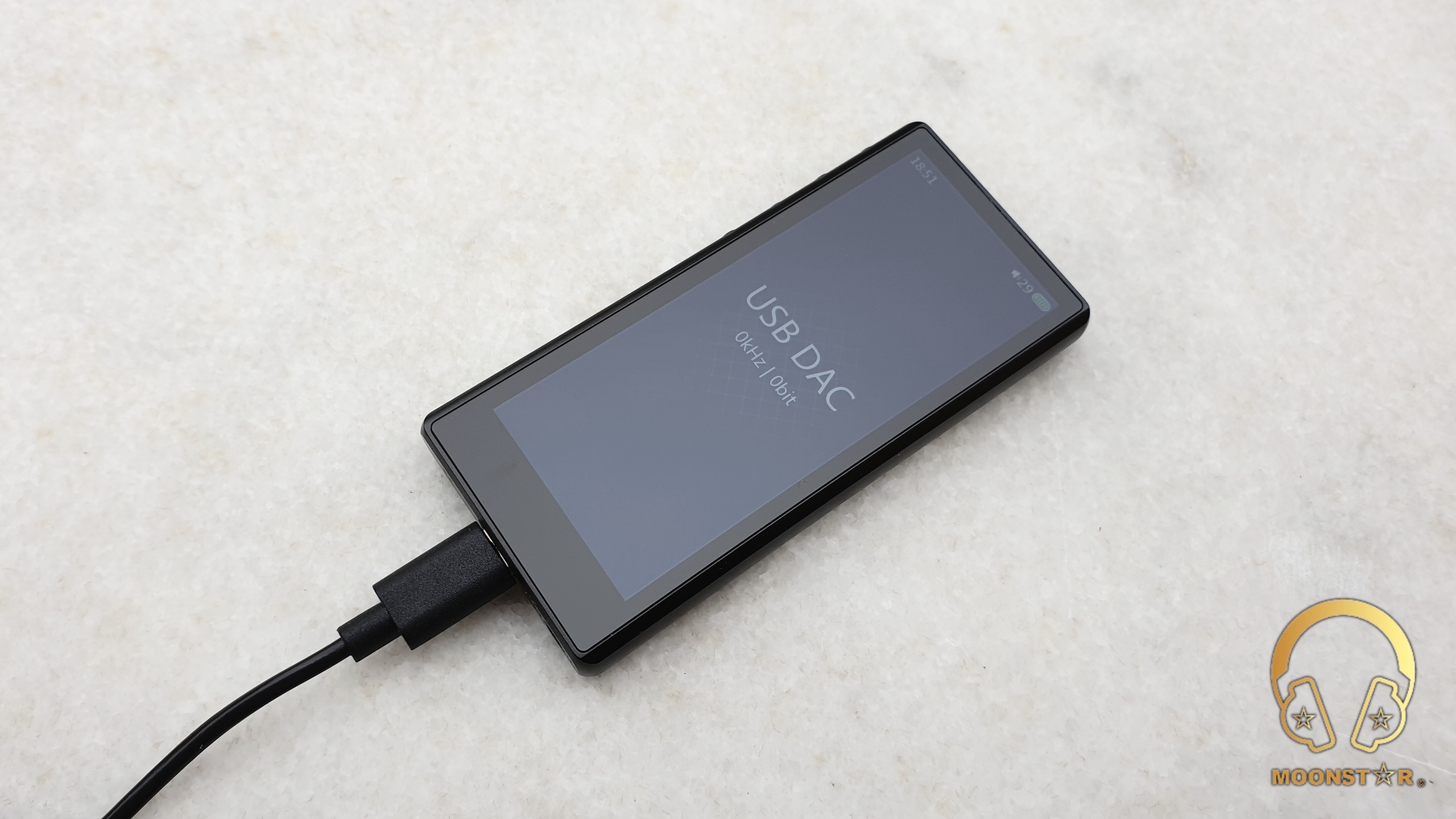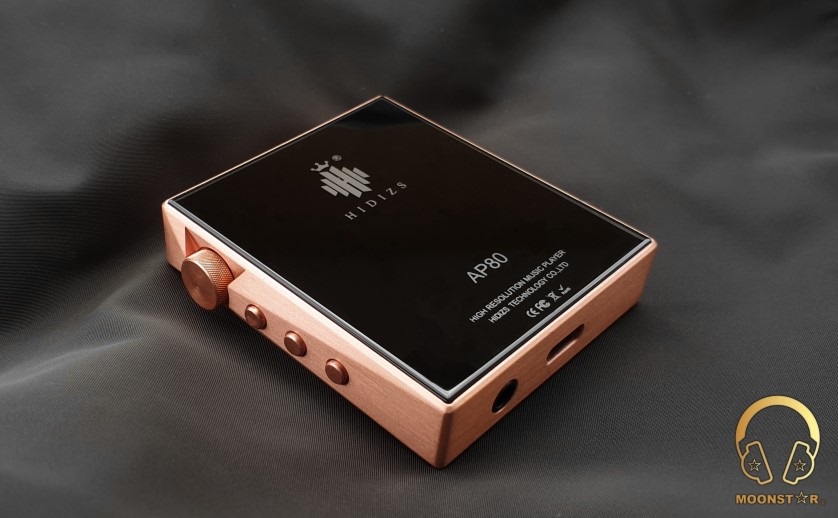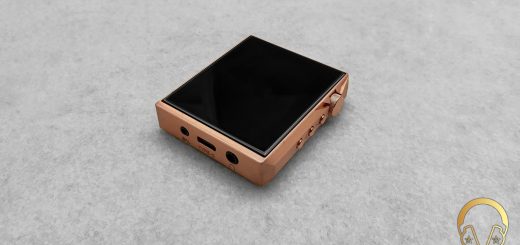FiiO M3 Pro DAP Review

FiiO M3 Pro Review
Introduction:
The FiiO M3 Pro is the latest member of the M Series Digital Audio Player and is the new entry level device of the company. The M3 Pro features some nice hardware specs for a device under 100 USD such like an Ingenic X1000E processor, ES9218P DAC chip, 3.5” touch display, USB DAC/USB Audio and Lossless Voice recording.

Disclaimer:
I would like to thank FiiO for providing me this sample for review purposes. I am not affiliated with FiiO beyond this review and all these words reflect my true and unaltered opinions about the product.
Purchase Links:
The actual price for the FiiO M3 Pro is 79.99 USD under can be purchased from the links below;
Package and Accessories:
The device came in a relative small box in black color that has the product illustration and dome brandings on the top and some technical detail and certifications at the back side of the box.

This box contains the following items:
- 1 piece x FiiO M3 Pro Digital Audio Player (DAP)
- 1 piece x USB 2.0 to USB Type-C cable for file transfer and charging
- 1 pair x Screen Protectors
- 1 piece x Warranty card
- 1 piece x User Manual, etc.

The box didn’t include any silicone or protective case which needs to be purchased separately.

Design, Buttons and Build Quality:
The FiiO M3 is a very portable device with a small form factor (95.8×45.4×10.4mm) and nice to hold shape. It looks surprisingly premium for a device at this price and is also pretty lightweight with only 70grams which is 10% less than the M3K (77grams).

The device has a body which shows a combination of metal and glass.

The chassis has a curved shape and is made of anodized aluminum in black color.

The M3 Pro shows a very solid appearance and is pretty well made without any noticeable gaps or other imperfections.

The left side of the deices sports four physical buttons (power on/off, volume up, play/pause, volume down) that do show a good response.

Here is also a single MicroSD card slot with a theoretically expansion capacity of up to 2TB. Please note that the M3 Pro has no build in storage, which means you need a MicroSD card to listen to your music library.

The top and the right surface of the M3 Pro are plain.

At the bottom of the device is a microphone, the multi directional USB Type-C port that supports charging, file transfer, USB DAC and USB Audio functions.

On the front of the FiiO M3 Pro is a 3.46’’ Touch Display with a pixel density of 300×800 which is much higher in resolution compared to the one on the M3K which was a non-touch display with a resolution of 240×320 pixels.

The screen quality is pretty good in terms of sharpness, contrast and outdoor visibility for such a small and inexpensive device.

At the rear side of the device is a glass surface that has the FiiO & Hi-Res Audio on the top. Here you can find some industrial standards and certifications.

I do really like to hold the M3 Pro in my hand thanks to the nice form factor and sleek surface.
Specifications:
| CPU | Ingenic X1000E |
| DAC | ES9218P |
| Screen | 3.46 inch |
| Operation | Touch Screen |
| Dimensions | approx. 95.8×45.4×10.4mm |
| Charging time | <2h(DC5V/2A) |
| Battery life | >15 hours |
| Standby time | >35 days |
| Battery | 1100mAh |
| Storage | micro-SD card (supports up to 2T) |
| Power output | ≥92mW(16Ω / THD+N<1%) |
| ≥75mW(32Ω / THD+N<1%) | |
| ≥8mW(300Ω / THD+N<1%) | |
| Frequency Response | 20Hz~90 kHz(-3dB) |
| SNR | ≥117dB(A-weighted) |
| Output impedance | <0.3Ω |
| Recommended drive loads | 16~100Ω |
| THD + N | <0.001%(1kHz/32Ω) |
| Separation | 78dB |
| Noise Floor | <2μV(A-weighted) |
Supported File Formats:
| Lossless: | DSD:DSD64 / DS128(“.iso”“.dsf”,“.dff”) |
| APE(Fast): 192 kHz/24 bit | |
| APE(Normal): 96 kHz/24 bit | |
| APE (High): 96 kHz/24 bit | |
| FLAC: 384 kHz/24 bit | |
| WAV: 384 kHz/32 bit | |
| Aiff:192 kHz/32 bit | |
| Aif:192 kHz/24 bit | |
| WMA Lossless: 96 kHz/24 bit | |
| Apple Lossless: 192 kHz/24 bit | |
| Lossy compression: | MP3,OGG, WMA, AAC, etc. |
Hardware and Software Features:
1. Hardware:
The FiiO M3 Pro is the latest member of the M Series Portable Audio Player and is the new entry level device of the company. The M3 Pro is a pretty inexpensive device with a small form factor that offers some nice hardware specs and features that I want to share know with you.

a) Processor:
The FiiO M3 Pro comes with the X1000E CPU of the company Ingenic Semiconductor with a processor speed of 1.0 GHz. It has a very energy efficient MIPS32 XBurst RISC core with double precision hardware float point unit for low power consumption.
b) DAC and AMP Section:
The FiiO M3 Pro features a single ES9218P DAC chip of the company ESS Technology with a build in amplifiers that comes with the patented 32-bit “HyperStream” architecture which can support up to 32-bit 384kHz PCM and DSD128. The Signal to Noise Ratio is 117 dB while the Total Harmonic Distortion + Noise (THD+N) are <0.001%(1kHz/32Ω. It supports popular high resolution and lossless audio formats including DSD, FLAC, ALAC, AIFF and WAV.
The FiiO M3 Pro is a small but pretty powerful device that offers an output power of 75mW @ 32Ω and 8mW @ 300Ω. It was able to drive the HiFiMAN Deva and SIVGA Phoenix to pretty high volumes.
The M3 Pro has a digital volume controller that can be set between “0 to 60”, while the volume set to 25 was quite enough for a comfortable listening experience.
c) Connectivity:
The FiiO M3 Pro has a 3.5mm (unbalanced) headphone out and a Micro USB port to use the device as UBB DAC. The asynchronous USB DAC function supports both Mac’s and Windows PC’s and you can also connect your Android device without the need of a 3rd party software, just plug and play.
With Mac computers, you can just plug-and-play the M3 Pro with no drivers needed. With Windows PC’s you need to install the driver, which you can find on FiiO’s website.
Either way allows you to listen file formats up to 384kHz/32bit and DSD128 (5.6Mhz/1bit) audio quality!
The M3 Pro also supports file transfers with USB OTG-compatible devices if connect it with a USB OTG cable. Doing so, you can quickly download and transfer music and other files easily and as quickly as through being hooked up to a computer.

Please note that the FiiO M3 Pro doesn’t features any Wireless connectivity such like Bluetooth.
d) Voice Recording Functionality:
The FiiO M3 Pro comes with a built-in HD microphone that is able to record in MP3 and WMA format up to 48kHz/16bit.
The recording functionality requires micro SD to be inserted into the M3 Pro – recordings are saved in a special folder in to the micro SD card. You can choose between low (mp3 format) and high (wave format).
e) Battery Life:
The FiiO M3 Pro has a build in 1000mAh Li-polymer battery which was able to last for 14 hours at settings “volume 30 out of 60, Flac 16bit 44.1kHz, screen off” conditions.
The standby mode is also impressive on paper with up to 35days that I couldn’t test for now. (Will be updated)

2. Software:
a) GUI:
The FiiO M3 Pro offers a Linux based software instead of Android which is colorful and pretty simple to use and navigate.

On the main screen are shortcuts of applications and settings such like File Browser, E-Book, Recorder, Galley, Calculator and Settings etc.
The FiiO M3 Pro has also a Drop Down Menu that appears if you swipe down from the top of the screen. Here you can find the some shortcuts Calculator, E-book, recorder, Player etc.

The status bar gives actual information’s such like Time, Battery, Volume, Line Out/ Phone Out, etc.

The applications such like calculator, voice recorder and gallery are some useful features for students which are the target consumers of the M3 Pro.

The now playing screen offers a number of details of the current playing song.

The System Settings Menu is allowing you to change some settings such as Brightness, Screen Timeout, Idle Standby, USB Mode, Recoding Quality, Time Settings, etc.

The Play Settings Menu offers access to settings such Play Mode, Playback Gap, Max Volume, Channel Balance and Equalizer etc. The M3 Pro has a Equalizer with 7 different presets that are for genres like Rock, Classical, Jazz, Pop, Dance, Vocal and Metal.

b) Gesture Controls:
The M3 Pro offers a gestures system that is quite easy to use. Here is a list of some swipe gestures.
- Return to previous menu or exit: Swipe right from the left edge of the screen
- Return to Home Menu: Swipe up from the bottom edge of the screen.
- Drop-down menu: Swipe down from the upper edge of the screen
- Bulk management menu: In the folder or play lists interface, swipe left from the right edge of the screen.
- Full screen cover Shortcut operation: In the playback interface with full screen cover enabled,, swipe up or down to adjust the volume, and swipe left or right to switch songs.
c) Firmware Update:
- Please go to our website to download firmware. Download link: http://www.fiio.com/supports; copy the M3 Pro.zip file package to the root directory of an FAT32-formatted SD card.
- Insert the card into the slot on M3 Pro (if not already inserted).
- Go to Settings >> System settings >> System updates and click “Yes” on the pop-up confirmation dialogue.
- The M3 pro will automatically restart and enter firmware update, the following dialogues will appear:
- Unzip Package => Updating => Update Successfully

Equipment’s used for this review:
- DAP’s : FiiO M3 Pro, Hidizs AP80
- IEM’s : FiiO FA7, FiiO FD1
- Headphones : SIVGA Phoenix, HiFiMAN Deva
Albums & tracks used for this review:
- Gogo Penguin – Raven (Flac 24bit/192kHz)
- Otto Liebert& Luna Negra – The River (DSF) – Binaural Recording
- Vivaldi – Le QuarttroStagioni “The Four Season” (Wav 24bit/88kHz)
- Elton John – Your Song (Flac 24bit/192kHz)
- David Bowie – Black Star (Flac 24bit/96kHz)
- Dave Gahan – Kingdom (Flac 16bit/44.1kHz)
- Eric Clapton – Unplugged Album (Flac 24bit/96kHz)
- B.B. King – Riding With The King (Flac 24bit/96kHz)
- First Aid Kit – My Silver Lining (Flac 16bit/44.1kHz)
- London Grammar – Interlude (Live) (Flac 24bit/88kHz)
- Aretha Franklin – I Say a Little Prayer (Wav 16bit/44.1kHz)
- Diana Krall – So Wonderful (DSF)
- Laura Pergolizzi – Lost On You “Live at Harvard and Stone” (Wav 16bit/44.1kHz)
- Rush’s – Leave That Thing Alone (Flac 16bit/44.1kHz)
- Liquid Tension Experiment 2 – Acid Rain (Flac 16bit/44.1kHz)
- Opeth – Damnation (Wav 16bit/44kHz)
- Metallica – Sad but True (Flac 24bit/96kHz)
- Megadeth – Sweating Bullets (Flac 24bit/96kHz)
- Slayer – Angel of Death (Flac 24bit/96kHz)
- Armin Van Buuren – Vini Vici (Spotify)
- Lorde – Royal (Flac 24bit/48kHz)
- Tom Player – Resonace Theory (16bit/44.1kHz)
- Massive Attack – Angel (Flac 24bit/192kHz)
- Portishead – The Hidden Camera (MP3 320kpbs)

The Sound:
The FiiO M3 Pro is a Digital Audio Player with a warm tonality that shows a pretty highlighted bass response along with a midrange that is fairly transparent and musical, while the treble presentation is in general smooth and has a sufficient level of extension.
Bass:
The bass of the FiiO M3 Pro is a bit pronounced and shows in general pretty successful in terms of detail and extension for a device at this price category.
The subbass region of the M3 Pro shows an average level of depth and extension, while the overall intensity and subbass rumble is fairly clear and entreating paired with the FiiO FD1 and FA7. The subbass performance of the M3 Pro with songs like Daft Punk’s – Doin’ it Right and Audiomachine’s – Blood and Stone is quite entreating and did show a moderate level of control and extension which is quite ok for a entry level device.
The midbass region of the FiiO M3 Pro is slightly more highlighted compared to the subbass area and shows a good level of intensity and good level of extension for an ultra-portable device. The bass sounds impactful and fairly controlled paired with the FiiO FA7 without remarkable mixings in some complex songs like Gogo Penguins – Raven.
The bass performance in terms of natural instrument presentation is quite good for an entry level device under 100 USD and shows in general a good intensity with drums, bass guitars or violas with an acceptable level of separation.

Midrange:
The midrange of the FiiO M3 Pro shows a fairly warm tonality with sufficient amount of clarity and airiness. The midrange is in general controlled, a bit colored and nicely musical.
The lower midrange of the M3 Pro shows a good level of depth and an average level of extension that offers enough fullness and musicality for male vocals or instruments like guitars or violas. Male vocals from Elton John to B.B King, from Dave Gahan to Eric Clapton do sound intimate and emotional.
The FiiO M3 Pro offers in the midrange area a nice level of separation and detail retrieval with respect of its price. The upper midrange on the other is sounds pronounced, airy and fairly controlled, paired with both the FA7 and the FD1 that do show a nice synergy.
Female vocals such like Edith Piaf or Tina Turner do sound crisp and lively with an average level of extension, while natural instruments like guitars, pianos or flutes are transparent and fairly detailed for a device at this price range.
Treble:
The treble range of the FiiO M3 Pro shows a pretty good performance in terms of extension and detail retrieval that I didn’t expected. It has a good amount of sparkle and air and doesn’t sounds overly sharp or harsh.
The transitions from the upper midrange up to the upper treble range are fairly controlled and fatigue free. Instruments such like hi-hats do come slightly from the background while cymbals and violins do have a moderate level of extension.
The treble character of the FiiO M3 Pro is in general mildly bright, airy and do show a sufficient level of sparkle that is needed in genres like metal music or jazz. The M3 Pro offers a treble tuning that is in general pretty lush and sweet in its presentation.

Soundstage:
The FiiO M3 Pro offers a fairly precise separation and placement of instrument and vocals, especially for an ultra-portable DAP at this price category. The soundstage shows an average level of wideness and a sufficient level of depth with good amount of air and space between instruments.
Comparison:
FiiO M3 Pro versus Hidizs AP80:
Both devices do features the same ES9218P DAC chip and do have a very close tonality, timbre and sound performance. The differences that I will write bellow are very minimal.

The FiiO M3 Pro has slightly more subbass depth and extension compared to the Hidizs AP80 which shows a tad less subbass rumble and intensity. The midbass region of the Hidizs AP80 shows a bit more depth and impact and is also softer in tonality compared to the FiiO M3 Pro that offers slightly tighter and harder hitting presentation. The bass speed and resolution is pretty close on both devices.

The midrange of the Hidzs AP80 is slightly warmer and a bit more forward in its presentation, while the midrange of the FiiO M3 Pro is a tad more recessed but on par in terms of airiness and clarity. Both the AP80 and M3 Pro do offer a good lower midrange depth and pretty emotional male vocal presentation.
The upper midrange of the FiiO M3 Pro is slightly more pronounced and brighter in its tonality. Both the M3 Pro and the AP80 are successful in terms of female vocals while the AP80 sounds a bit more intimate. The upper treble range of the Hidizs AP80 is slightly more highlighted and extends a bit more compared to the FiiO M3 Pro. Both devices are pretty successful in terms of detail retrieval sparkle and airiness.
The performance in terms of soundstage and separation/placement of vocals and instruments is pretty close. The Hidizs AP80 shows a slightly better wideness while the FiiO M3 Pro has the upper hand for depth.

Conclusion:
The FiiO M3 Pro is an inexpensive device if you consider the overall built quality, features and sound performance which have surpassed my expectations. FiiO offers with the M3 Pro a DAP with good detail retrieval and musicality, which comes also with some nice additions for students like eBook reader, calculator and HD voice recorder.
Pros and Cons:
- + Good Detail Retrieval and Musicality
- + Built Quality & Form Factor
- + Battery Life
- + Powerful Output
- + USB DAC and USB Audio
- – No Wireless Streaming capability (Bluetooth)
- – No Build in Storage
- – No Protective Case












Nice review, agree with everything up here as I’m owner of this one little black box.. Anyway thanks for every review here there are really informative and it’s pleasure to read them.. Good luck on new year, blessings upon you..
Thank you for your kindness, its my pleasure!
thank you for comparing this to ap80,
now iam very confident to buy a ap80 as both of daps has very close audio quality but i prefer smaller form factor.